Dar Urtatim Presents
Ottoman Women's Clothing
An Historical Overview
Part 4
The 19th Century
Early 19th Century
The early 19th century reflects a continuity of the late 18th, a chief difference being that the pictures have become bright, even garish.
During the century Europeans, especially European men, develop an appetite for pictures of exotic women, which were considered at this time to be quite racy. And as the century progresses, pictures often get racier, depicting women scantily clothed by both European and Ottoman standards. In fact, European men took sex tours of the Ottoman Empire.
Of the next six pictures, numbers 2, 3, and 4 are from the same artist.
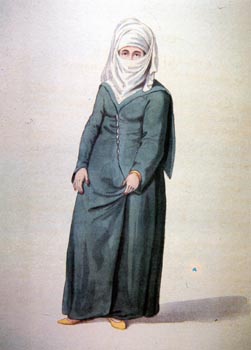
Fig. 1. Woman of Istanbul in Outdoor Clothing |

Fig. 2. Harem Servant |
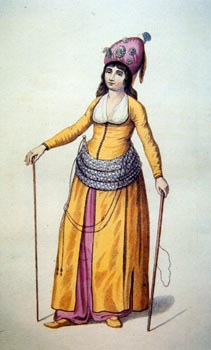
Fig. 3. Female Harem Official |
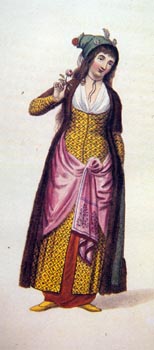
Fig. 4. |

Fig. 5. Turkish Woman of Pera |
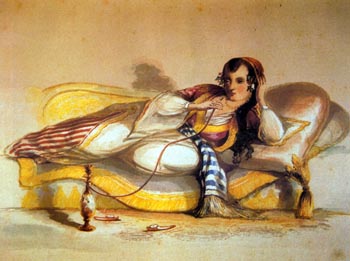
Fig. 6. Relaxing with a Water-pipe |
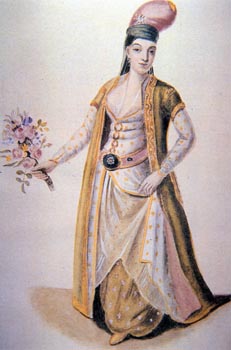
Fig. 7. 1810 - Sarayli Kadin |
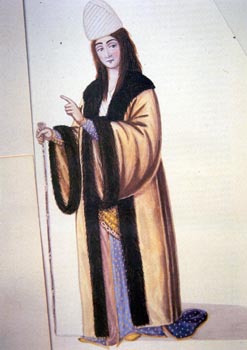
Fig. 8. 1818 - Harem Supervisor |
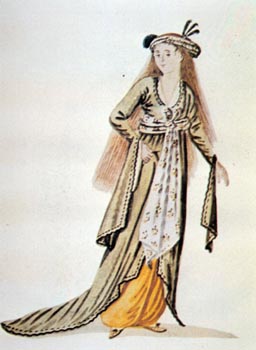
Fig. 9 |
Numbers 1 through 4 below are from one French work, while figure 5 is from a different French book. Notice how many of the figures in these book plates are copied from the more elegant color pictures above.
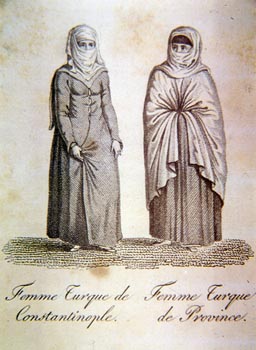
Left: Turkish Woman of Constantinople (see Fig. 1)
Right: Turkish Woman of the Provinces |
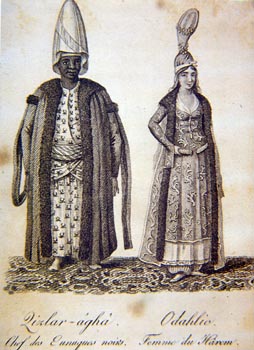
Left: Qizlar Agha, Chief of the Black Eunuchs
Right: Odalisque of the Harem (see Fig. 2) |
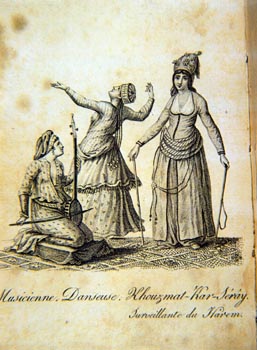
Left: Female Musician and Dancer
Right: Khouzmat 'Har Seray, Supervisor of the Harem (see Fig. 3) |
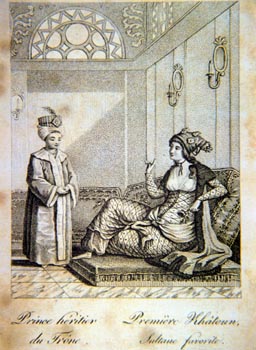
Prince Inheritor of the Throne
First Khalenn, Sultan's Favorite
Note that there was no clear line of inheritance to the throne - wives vied, often to the point of murder, to have their sons chosen, so this label suits European preconceived notions. |
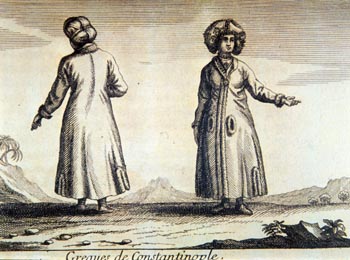
Greek Woman of Constantinople |
These coy and syrupy sweet pictures are from later in the 19th century. Note the trailing split skirts of the entari on the Haseki Sultana... they are just beginning to appear here...
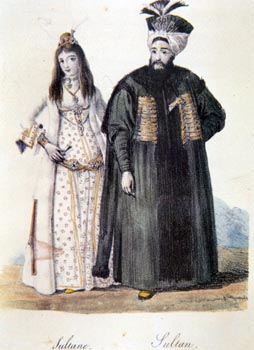
Sultana and Sultan |
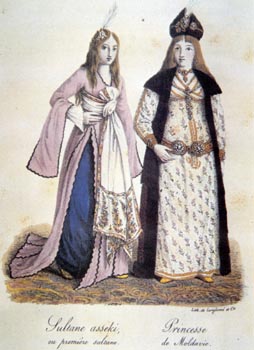
Haseki Sultana and Moldavian Princess |
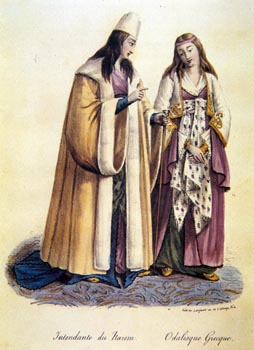
Harem Attendant and Greek Odalisque |
1850s - Amadeo Preziosi
Note how the women in the pictures below are romanticized and sentimentalized or sexualized, and the stereotypical presentation of the Jewish man.
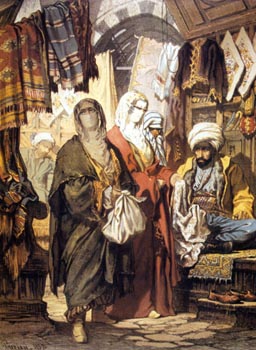
In the Silk Bazaar |
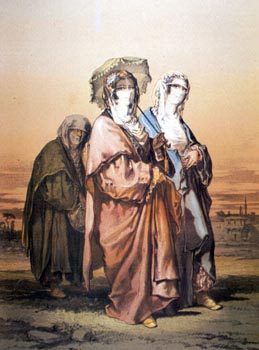
Wandering Around |
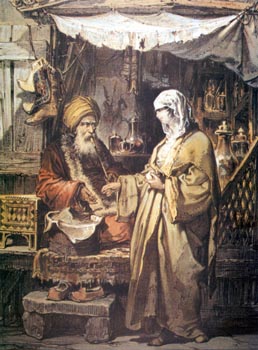
At the Herbalist |
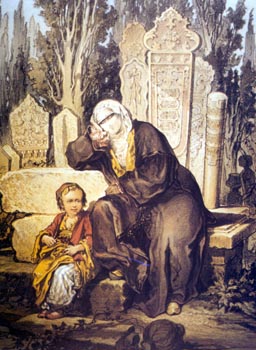
An Outing to the Cemetery |
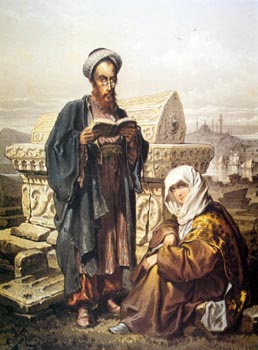
Two Jews |
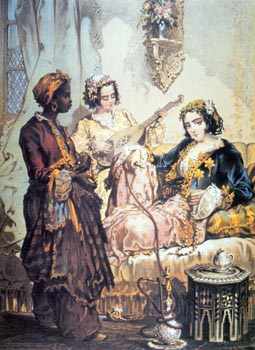
In the Harem |
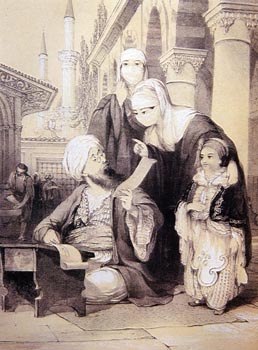
At the Petition Writer |
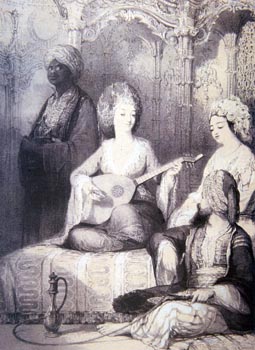
Entertaining |
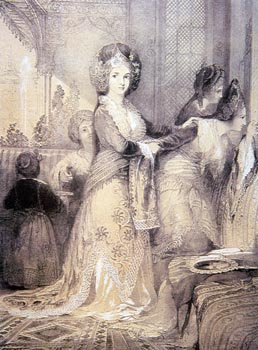
Odalisques in the Harem |
1870s - John Frederick Lewis
Paintings by John Frederick Lewis are popular today, but they are from the 1870s, so almost 300 years too late for the SCA. They make it clear how much Ottoman clothing had changed in the intervening years. The entari now has split sleeves, and trailing multiply split skirts. Additionally short loose jackets have entered the fashion vocabulary.
Note that the paintings, is set anywhere, are in Cairo, Egypt, not in Turkey. The paintings are staged and Lewis uses the same models repeatedly in many of them. For example, the model who portrays the saucy slave in "Lilium Auratum" is the female with the fan leaning against the wall at the head of the sickbed in "Prayre of the Faithful". So one cannot be sure these are really accurate representations of what women were wearing.
While Lewis conveys the langour of life in a hot country and the beauty of the surroundings and the women, he is never smarmy, never oogling, never cheapens the women into pure sex objects. He actually lived in Egypt for ten years, avoiding contact with Europeans, and many of his paintings are set in his own house.
Pictures are clickable for a larger view.

"Lilium Auratum" (Gilded Lily?) - 1871 |
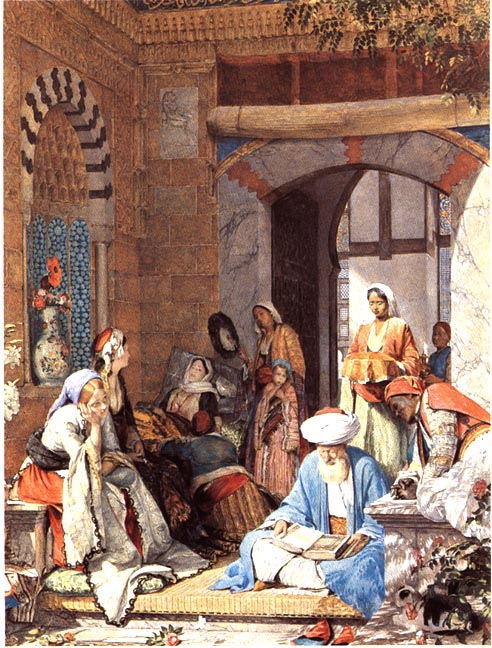
"And the Prayer of the Faithful" - 1872 |
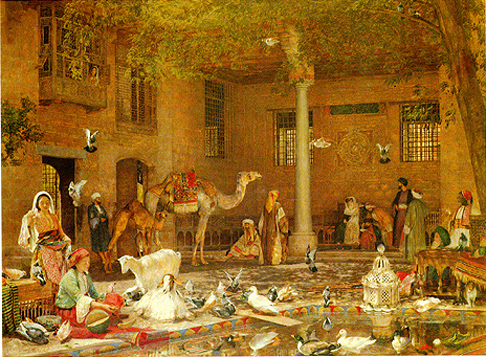
"The Hosh" - 1864 |
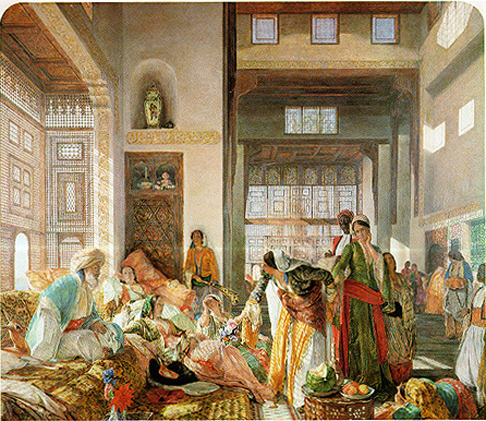
"The Intercepted Correspondence" |
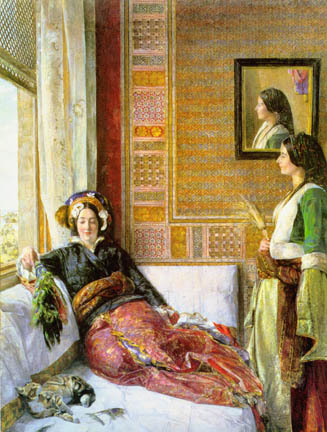
"Harem Life, Constantinople" |
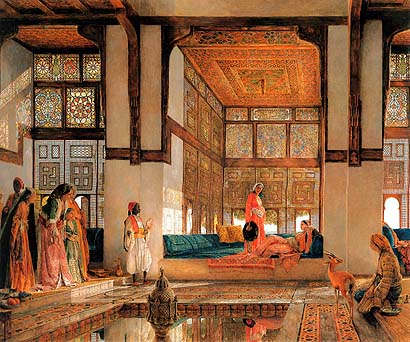
"The Reception - 1873"
Depicts the arrival of a new woman in the harem... how will the other women react? |































